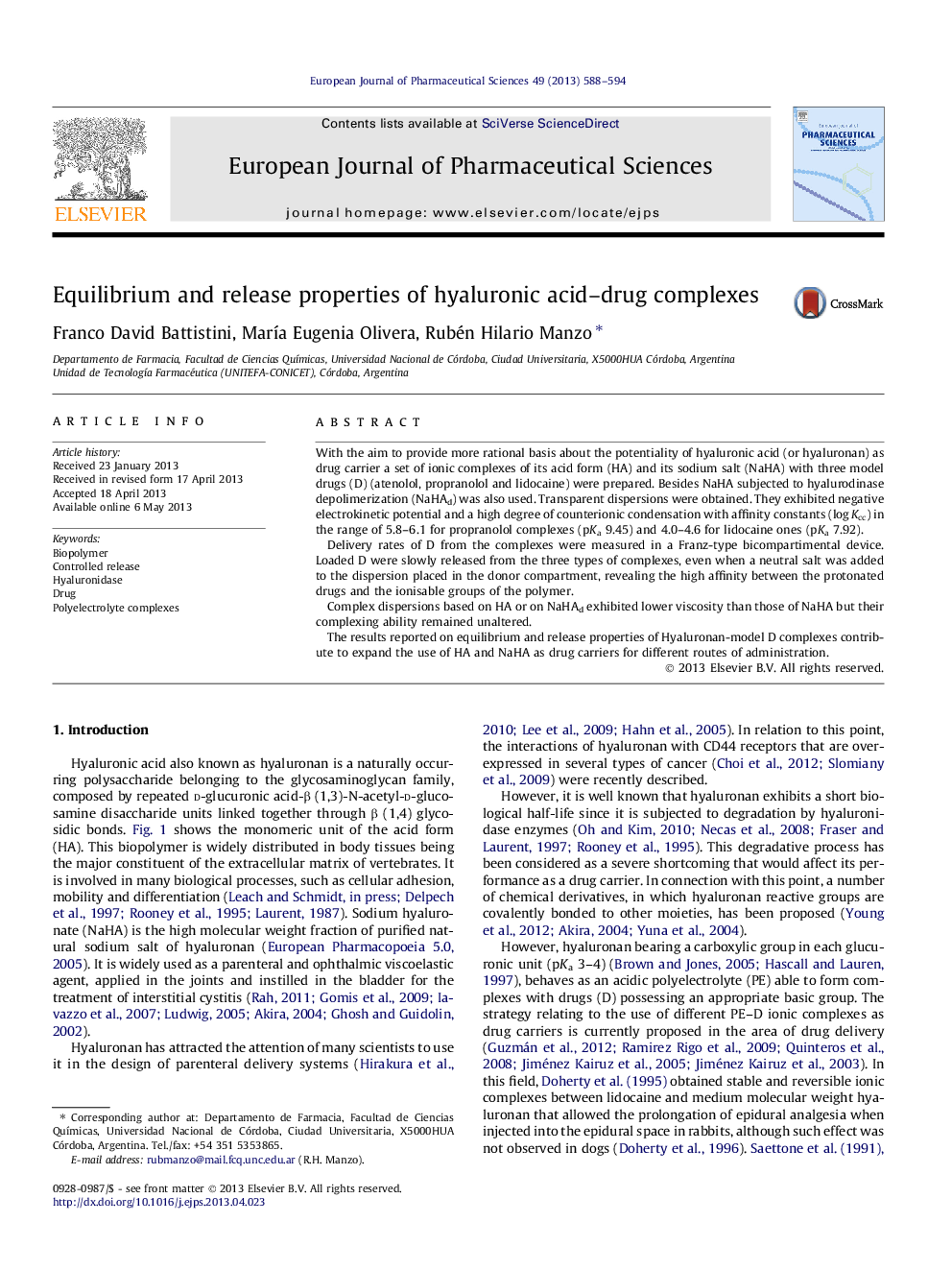| Article ID | Journal | Published Year | Pages | File Type |
|---|---|---|---|---|
| 2480852 | European Journal of Pharmaceutical Sciences | 2013 | 7 Pages |
With the aim to provide more rational basis about the potentiality of hyaluronic acid (or hyaluronan) as drug carrier a set of ionic complexes of its acid form (HA) and its sodium salt (NaHA) with three model drugs (D) (atenolol, propranolol and lidocaine) were prepared. Besides NaHA subjected to hyalurodinase depolimerization (NaHAd) was also used. Transparent dispersions were obtained. They exhibited negative electrokinetic potential and a high degree of counterionic condensation with affinity constants (log Kcc) in the range of 5.8–6.1 for propranolol complexes (pKa 9.45) and 4.0–4.6 for lidocaine ones (pKa 7.92).Delivery rates of D from the complexes were measured in a Franz-type bicompartimental device. Loaded D were slowly released from the three types of complexes, even when a neutral salt was added to the dispersion placed in the donor compartment, revealing the high affinity between the protonated drugs and the ionisable groups of the polymer.Complex dispersions based on HA or on NaHAd exhibited lower viscosity than those of NaHA but their complexing ability remained unaltered.The results reported on equilibrium and release properties of Hyaluronan-model D complexes contribute to expand the use of HA and NaHA as drug carriers for different routes of administration.
Graphical abstractSpecies distribution after partition with cyclohexane of sodium hyaluronate and hyaluronic acid complexed with variable proportions of model drugs. The subscript numbers correspond to the molar fraction of D forming part of the ionic complex after the partition.Figure optionsDownload full-size imageDownload high-quality image (75 K)Download as PowerPoint slide
